New Zeiss wide angle SLR Lenses – and how they stack up against their Canon EF counterparts
 One of the most questions I get asked by HDSLR filmmakers is:
One of the most questions I get asked by HDSLR filmmakers is:
Should I buy Canon EF lenses or Zeiss ZE lenses for HDSLR video?
I recently tested two wide angle Zeiss ZE SLR lenses – one that is currently available (25mm 1:2), and another that won’t be available until May of this year (15mm 1:2.8) and thought that this would be a good time to partially help answer this question.
First – Canon EF lenses obviously have incredibly high speed (USM) Ultrasonic autofocus motors built in, whereas Zeiss ZE lenses are purely manual focus lenses. For still photographers this is going to be a big factor – needless to say, the edge goes to Canon if you need autofocus.
But with Ultrasonic autofocus comes a significant problem for filmmakers: given that the Canon lenses use magnets to make the connections between the lens focus ring and the inner focusing mechanism – it is common to have the lens be far less consistent with focusing marks.
Furthermore, if you continue to rotate the lens past either the infinity or the macro limit on a USM Canon lens – you will effectively lose all of your focus marks as the lens focusing ring will turn indefinitely. This can be costly in terms of the time you’ll lose by having to remeasure the marks on set. Zeiss lenses are purely mechanical (no magnets) and therefore they stop at infinity, and at the macro points. Therefore you will never loose a focus mark, nor will one "drift" over time as Canon EF (magnetic) lenses often do. This should be a pretty significant consideration for HDSLR filmmakers in my opinion – I know it is for me.

Canon lenses are also designed for autofocus use and they are not as clearly marked (in terms of distance markings) and generally do not have as much of a rotation on the focus ring as the Zeiss optics do either – meaning that they are harder to focus manually. This is especially true (and an important factor) when it comes to wide angle lenses.
Last but not least: the optics:
This is a general statement – but the Zeiss and Canon lenses tend to be pretty even when you look at the focal lengths from 85mm and longer. That being said, Zeiss lenses are generally sharper amongst the wide focal lengths. You’ll notice this pretty significantly when you look at the edges of your frame, and when you shoot wide open (when you compare the Zeiss and Canon lenses that is – see below for examples that illustrate this point.) As you close down your aperture, this distinction becomes less apparent (you’ll also notice that there is less chromatic aberration with the Zeiss lenses when compared to the Canon EF lenses, especially with wider lenses.)
Therefore – wide angle Zeiss ZE lenses are pretty much the way to go for HDSLR filmmaking in my opinion – notably with anything from a 15mm through a 24mm lens.
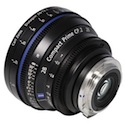 Of course the big brothers to the Zeiss ZE lenses – the Zeiss CP.2 lenses are BUILT for cinema and they are also at a significantly higher price point. With CP.2 lenses, the rotation of the lens focusing barrel is 300 degrees and very clearly marked when compared to the Zeiss ZE and Canon EF lenses, which makes focusing SIGNIFICANTLY easier by a large factor. The aperture ring (or iris) is also fluid – whereas both the Canon EF and Zeiss ZE lenses can only make 1/3 stop jumps which is far too noticeable with video if you are trying to close the iris down or up while you are shooting video.
Of course the big brothers to the Zeiss ZE lenses – the Zeiss CP.2 lenses are BUILT for cinema and they are also at a significantly higher price point. With CP.2 lenses, the rotation of the lens focusing barrel is 300 degrees and very clearly marked when compared to the Zeiss ZE and Canon EF lenses, which makes focusing SIGNIFICANTLY easier by a large factor. The aperture ring (or iris) is also fluid – whereas both the Canon EF and Zeiss ZE lenses can only make 1/3 stop jumps which is far too noticeable with video if you are trying to close the iris down or up while you are shooting video.
I am very much looking forward to testing the new series of Canon Cinema Prime lenses (they have announced a 24mm f/1.5, a 50mm f/1.3, and an 85mm f/1.3) But there is one thing that is surprising: they are only being released with EF lens mounts. The Zeiss CP.2 lenses have a kit that allows you to swap mounts – from EF to the cinema standard PL mounts. This is a HUGE advantage – as you can use all CP.2 lenses on both Canon cameras as well as ALL CINEMA cameras in the world regardless of brand. I use my CP.2s with the C300 for example – as well as the RED Epic camera and other cinema cameras with the PL mounts. Swapping the mounts takes but a few minutes per lens and can easily be done out in the field with just a TORX screwdriver. This makes the CP.2 lenses fantastic long-term investments.
The PL Lens mount is also significantly more suited for cinema – the lenses don’t flex when you focus (unlike the Canon EF mount which does flex when you focus the lens with a follow focus or motor, given the way it is designed.) Therefore I see the CP.2 lenses to be a clear solution in terms of a solid long term investment. Check out the LENS section of this blog for more information on these lenses. If you can’t make the type of investment in the CP.2 lenses – your next best option are the ZE lenses. The optics in the ZE and CP.2 lenses are identical for those that are curious – although I am told the "pick of the litter" in terms of optics are chosen for the CP.2 lenses. The ZE lenses cannot be converted to PL mounts to be clear.
So back to the new lenses from Zeiss:
The first is the Zeiss 15mm f/2.8 ZE, which won’t be out until May. I was fortunate to have gotten my hands on this lens recently, and the optics are incredibly sharp – perhaps the sharpest wide angle still 35mm SLR lens I have ever tested. Unlike the 15mm f/2.8Canon lens (which has been discontinued in favor of the 8-15mm f/4 zoom) – the Zeiss lens isn’t a fisheye, it is a rectilinear lens, and the distortion is minimal, despite its 110 degree field of view. The lens should actually be compared to the Canon 14mm f/2.8, which also uses an aspherical lens element.
Look through the pictures of my tests of these two lenses below:
Above is the Canon 14mm 2.8 – (Click on the picture for a full resolution image.)
Above is the Zeiss ZE 15mm 2.8 – you’ll notice the 1mm difference is more noticeable than one might think… (Click on the picture for a full resolution image.)
Here is a crop of the edge of the Canon 14mm 2.8. You’ll see that the image blurs on the edges losing significant detail relative to the Zeiss 15mm below. (Click on the picture for a full resolution image.)
With the Zeiss 15mm 2.8 crop of the wide image above – you’ll notice that while the lens is not as wide, it is significantly sharper on the edges, this is a huge plus for landscape and landscape photographers and filmmakers in general. (Click on the picture for a full resolution image.)
The second lens that Zeiss is releasing, is the new Zeiss 25mm f/2 ZE, which is currently available. Like the other ZE lenses, this lens is Manual focus only – but incredibly sharp. It’s faster than it’s CP.2 counter part, which is T2.9, but slightly slower than the Canon 24mm, which clocks in at f/1.4. But the performance wide open is hands down better than the Canon at either f/1.4 or f/2.0.
There are more examples after the break below.
Above is the Zeiss 25mm 2.0 full frame. (Click on the picture for a full resolution image.)
Notice how sharp the edge detail is on the top left corner. (I did not have a Canon 24mm 1.4 version II on hand to make a comparison unfortunately – but I can speak from experience and past tests that the Zeiss lens is sharper on the edges hands down.) (Click on the picture for a full resolution image.)
Here is an other example of the Canon 14mm 2.8 vs the Zeiss 15mm 2.8 below.
Canon 14mm 2.8 full frame (Click on the picture for a full resolution image.)
Crop of the top right of the image on the Canon 14mm 2.8 – (Click on the picture for a full resolution image.)

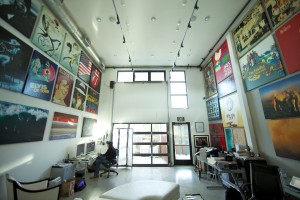









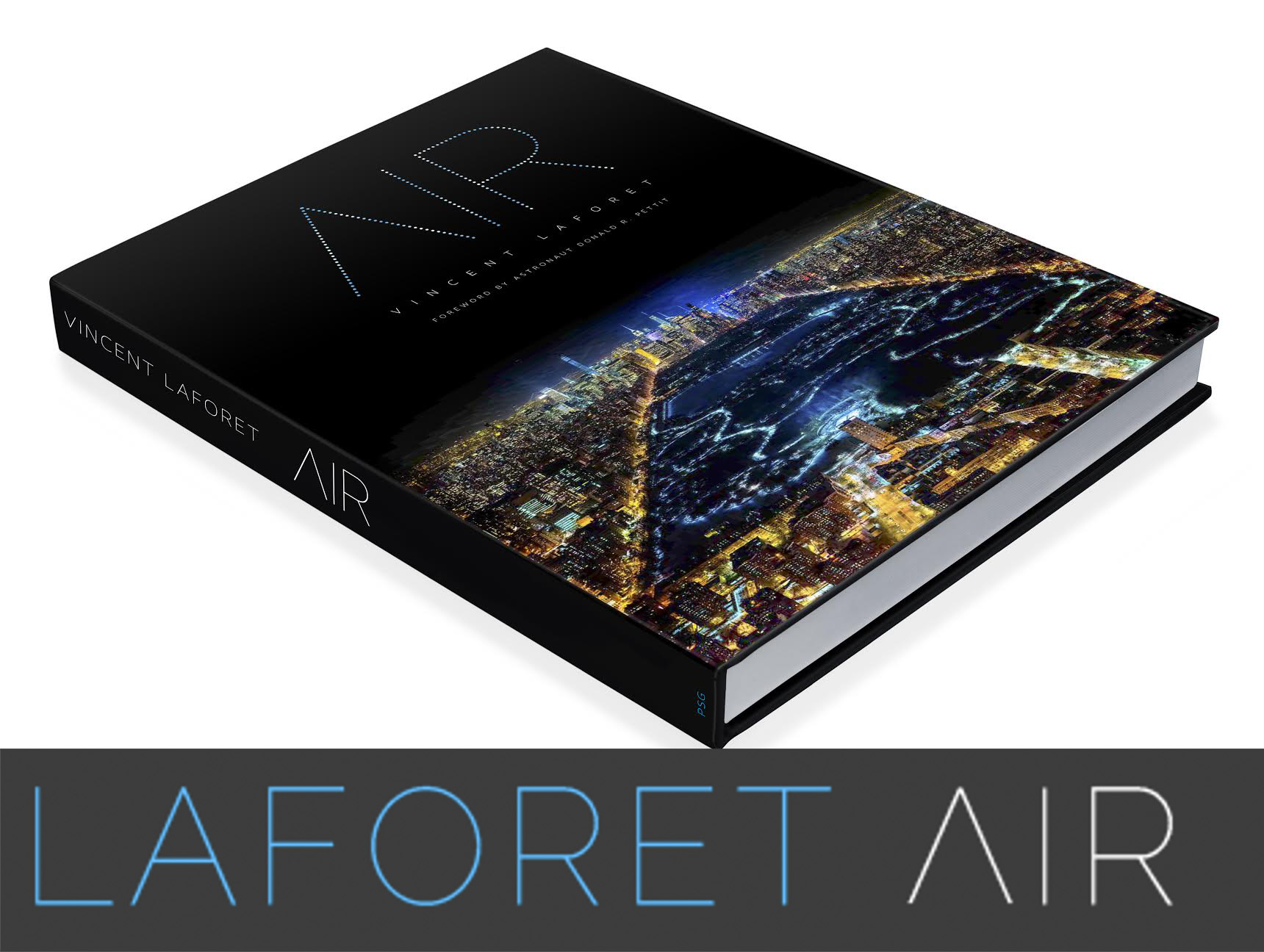
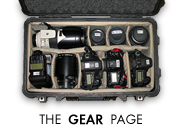

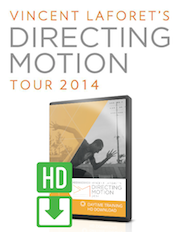
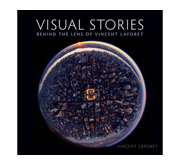







Camera rental house like us got to have one more arsenal in our inventory. Thanks for the useful information.
Ouch, Canon lens looks like an amateur lens aside from the Zeiss one !
I been a Zeiss user for the past year and I think the lenses photo and film wise is better than the Canon’s for sure, especially if you pride yourself on using manual focus. Thanks for the blog!
nice one. I would love to see a comparison between these two, and the Samyang 14mm 2.8
It is known as a sharper lens as the Canon 14mm 2.8 II, but it’s only around 500$
do you have one?
Vincent Laforet Reply:
April 9th, 2012 at 12:30 pm
I do not have one 🙁 If they want to send one to me to compare – I’m happy to 😉
Dirty Reply:
April 11th, 2012 at 6:28 am
That’s complete BS, while the Samyang is a decent lens for the price it’s insulting to compare it to the 14LII. There is a reason that one costs 5x more than the other. Now the Samyang 35 1.4 is a different story, I think that one is definitely as sharp as the Canon 35L and a fraction of the price. But just because they make one lens that’s just as good as it’s Canon counterpart does not mean the others are.
Very nice comparison. The Zeiss lenses pretty much kill the Canons.
Good to know.
Does swapping back-n-forth between PL and Canon mounts on the CP.2 affect the back focus on the camera at some point? Or is there no way it screw up the back focus?
I assume it should be all-right, but it’s like swapping the mount on the Epic: I’m not sure I understand how this modularity does or does not affect back-focus. It’s my understanding that the distance between sensor and lens is an extremely precise science…
Am I wrong?
Vincent Laforet Reply:
April 9th, 2012 at 12:30 pm
I haven’t had a problem with it. But I share the same concerns 😉 That being said – checking the flange distance should be one of the first things done in any camera prep…. Both PL and EF lenses come with shims to make sure the alignment is perfect – and so far: no problems.
Its a pity that you measure the edge of the image for sharpness yet dont tell us at what F stop the image was taken at, or at what focusing distance the two lenses were set at, this concludes nothing in my opinion, not to mention the fact that the extra 1mm of lens will give you a wider picture, so maybe you should be measuring the lens sharpness at the same places, but you cant as the focal lengths are different, so in conclusion, your test is flawed, i do agree that most of the comments in the article surrounding the focus issues and the use of these lenses in the film (video) industry would be quite correct.
Vincent Laforet Reply:
April 10th, 2012 at 12:36 am
All lenses were shot wide open.
Nice comparison! Very helpful.
I concur, I recently purchased a Zeiss 25mm 2.8 ZM it is superior to the wides I used on my 5D’s and even better than the Leica 28mm Elmarit which cost nearly double the price in Australia. The sharpness and colour rendering are just magic. Sh, but don’t tell them they’l jack the price up!
@Vincent Laforet,
nevermind:) I found a resolution chart comparison between the Zeiss ZE, and the Samyang (same as the brand Rokinon). There is no competition, the Zeiss is a pure winner at all apertures, meaning incredibly sharp. I always wanted a set of ZE primes, now I want them even more:)
好不容易不下雨出太阳了,博主不出去走走,指导下小弟做的小站超级P57http://www.chaoji57.com 谢谢!
I dont think it’s a big surprise that 15mm Zeiss is better than 14mm Canon. Even a 400 dollar Samyang 14mm wipes the floor with 14mm Canon.
That said, with stunning 17mm and 24mm primes for Canon, Zeiss wide lenses dont make that much sense to me.
Thanks for this very helpful review Vincent. I’m a film student from Germany and after reading this article (I considered to buy this lens for nearly 2 months) I’ll finally get my hands down on one of these. I’ll also have to visit the Zeiss Headquarters and lens production in Germany (it’s a two hours ride :)) even if those lenses are manufactured in Japan. Are you using these lenses for video or do you use the CP.2 instead?
Vincent Laforet Reply:
April 11th, 2012 at 12:05 am
I use the CP.2 whenever possible
@Vincent Laforet, thanks for the reply…
any comment for ZE 21/2.8 and the new ZE 15/2.8? thanks, vincent.
Vincent Laforet Reply:
April 11th, 2012 at 12:04 am
The new ZE is reviewed in this article… I haven’t tried the 21mm – but I do have the CP.2 version and love it.
@Ben, The Samyang hardly “wipes the floor” with the 14LII. I don’t know where you guys are getting this idea that the 14LII is a bad lens, it renders color beautifully and it’s worlds sharper than the 16-35mm II and people love that lens. Samyang makes decent lenses for the money (although I think their 35 1.4 is great), but come on Canon would never sell any 14L’s for $2k+ if you could go buy some $300 Samyang that was just as good. You guys are focusing too much on the price difference and declaring Samyang superior based on it’s good value, but comparing IQ straight up the 14L II wins hands down.
Zeiss wide lenses don’t make that much sense to you? Did you read the article or did you just come on here and start throwing out random numbers and unfounded conclusions?
Have been looking at trading in my Canon lenses for a manual option for some time now and have looked closely at the Zeiss ZE primes…. two questions Vincent:
1) Do you advocate getting the Zeiss lenses ‘declicked’
2) Have you any experience withe the Leica Summilux lenses on a Canon HDSLR?
Thanks for a such a great article.
Vincent Laforet Reply:
April 11th, 2012 at 8:22 pm
1. yes if you can
2. Leicas are great as well. I just would go w/ the Zeiss for repairs / availability etc.
If you want to see a Canon prime that will compare to the Ziess for sharpness throughout the frame look at the new version of the TS-E 24mm f/3.5L II and the TS-E 17mm f/4L. They also do not have the flex issue because they are manual focus. The TS-E 24 II, 45 & 90mm lenses also work very well with the EF 1.4x Extender.
@Dirty,
I read the article. I mentioned 17mm and 24mm Canons – both FANTASTIC lenses – and it’s those two lenses that make me not desire for any of the Zeiss wides. Vincent didn’t test those in the post, only the lackluster 14mm.
Vincent Laforet Reply:
April 12th, 2012 at 11:43 am
The tilt shifts are fantastic indeed – but they don’t AF and aren’t standard lenses. I’d love to do a side by side if I have time. The ZE primes definitely outperform the standard Canon primes optically when wide open.
@Vincent Laforet, Thanks!
Hey, thanks for this. Great to have your take. The comedy is that I was/am leaning in the (exact) opposite direction after renting and testing a bunch of zeiss lenses. I actually don’t think they’re suitable for DSLR video work 90% of the time. You give up to much to get a bit more sharpness that is – it should be added – incredibly difficult to notice in HD. Sure – renting the CP2’s for dramatic work makes sense. But there ought to be a huge Buyer Beware sign above Zeiss lenses. First everyone should know that the lenses are really made by a japanese company, Cosina. Credit Cosina for being smart enough to know that the heritage of Zeiss matters as much as pixel peeping because everyone at the Zeiss/Voigtlander tradeshow booths look German and have a (sometimes hilarious) euro accent. That’s not to say that the lenses are not fantastic, and that the 21mm doesn’t deserve the love that photographers have given it over the years. But…
1. I’m a (small time, Canadian) producer. And as I producer I really wish people would get that the whole point of HDSLR or even c300 shooting is to get a look that you can’t with a standard video camera. The point for 99% of the work is not really to ‘ape’ cinema production because you can rent real cinema equipment for a real project, and if you don’t have a real budget for your short film you almost certainly should *not* make it for profit because short film is quite possibly worst business scenario ever invented (for producers) (not even sure that directors are best served by a ‘calling card’ project shot on HDSLR). The market in 2012 is the internet for corporate/advertising work and/or broadcast television. People should be clear about this. I would argue that your wonderful ‘Mobius’ short is really a corporate video. And that should be a badge of honour in 2012. It’s arguably the best corporate video ever made… but nonetheless it is a corporate video. The point should be to beat Hollywood, not imitate it. It feels retrograde to me when people try to imitate a studio model of production built 100 years ago. Of course, yov’ve made a great argument for why that might be the case on ambitious projects: time constraints, reliability etc. but a disturbingly large part of all of this feels like weekend warrior paintball people who building ‘real’ guns. .
2. If you’re buying a Canon DSLR or even a c300 it makes the most sense (to me) to buy Canon glass first and foremost. A big reason is the ‘peripheral illumination correction’ setting. Very important and useful even if Philip Bloom tells you to turn it off. Another big reason is the advent of (cheaper, possibly better) electronic follow focus units like Manfrotto’s recently announced SYMPLA. But the best reason to use a Canon DSLR is the unique and relatively cheap lenses like the 100mm macro, the 50 f1.2, the 24mm tilt shift, and the zooms with IS. You introduced a lot of us to those lenses and I think they still make the most sense with this gear. Especially if projects/clients call for stills on occasion. And they will.
3. Does it really make sense to use ‘sharpness’ as criteria for 1080p video? Maybe at 2k this becomes a legitimate issue but I sincerely doubt it. Side note: I’m writing this as a colour corrected 4:2:2 1080p segment renders on a solid workstation. It’s super,super slow, and I don’t see 2k making any sense for broadcast until maybe 2 generations of CPU technology catch up. Canada’s biggest television network uses the worst flavour of Avid’s DNxHD codec in-house, and is downgrading from that to free up storage space. Braodcast HD is still 1080i So that’s 3-20 years before the type of sharpness that matters to stills shooters becomes important for motion work.
3. A not to be underestimated annoyance is the loud metal-on-metal clicking noises the ZE and ZF lenses make if you hit the hard stops. No such problem with the CP2 lenses, thankfully. But everyone who buys the Zeiss photo lenses for video should hear that sound several times before they buy an expensive non-autofocus prime.
4. This is not to say that (in my experience) non-Canon lenses don’t make sense. I wholeheartedly recommend the 14mm Samyang, which I prefer to the Canon 14mm because I tend to put it in situations where it could get destroyed and the whole effect of 14mm in HD is always the same – ‘wow that’s wide’. You can destroy several Samyang lenses for the cost of one Zeiss 15mm, and chances are a lens that wide is going to end up in more than a few dubious corners. I also doubt if anyone would ever notice the difference if you swapped between the canon, samyang and zeiss 14/15’s in the same scene. Samyang’s other lenses are a bit dicey – the 35 isn’t as wide as it ought to be and the 8mm fisheye gives you a look that probably peaked with the Beastie Boys.
To be fair to Cosina, I would recommend one of their lenses to everyone. I’m a huge fan of the tiny 20mm Voigtlander – which is awesome for daytime shots because it has a 9 blade aperture and makes beautiful sunspots. It’s almost always in focus at f5.6-f8 and the (slight) distortion can be corrected in Photoshop and Lightroom. It’s also useful for video on both crop and full frame cameras.
Wow, this is incredibly long. All apologies. Can’t thank you enough for all of the review work you’ve done over the years, and because of this I’ll check out the Zeiss 15 when/if it arrives in theses parts.
@Vincent Laforet, you are correct, the TS-E’s are not standard lenses but I don’t consider the Zeiss lenses standard either. They do not auto focus and they do not offer IS or VR. It has been known for many years, by us landscape photographers anyway, that Zeiss lenses work great wide open. It has also known that normal Canon lenses needed to be stopped down to at least f/8 for optimal sharpness. It’s just the way it has been forever. Until now, I’ve never needed to worry about shooting wide open. I’m glad that the TS-E’s are as good as the are, it’s that huge image circle that gives them their edge to edge sharpness. I’ve been using them exclusively since giving up my large-format field camera for an EOS 1Ds 7 years ago.
Thanks, Vincent. I have read your article about ZE 15/2.8 and think it’s an excellent lens. But I have ZE 21/2.8, which is also very good, and am not sure whether I should get one 15/2.8 since it’s kind of expensive.
Loose?
I think you mean ‘lose’.
@cb, I agree with you wholeheartedly.
I rent out my gear sometimes and for me unfortunately it is important I buy name brands as clients are so brand conscious when it comes to renting…
thanks, your article and tests were very informative.
amazing posts guys… good read
Did you use Mark II version of 14mm??
Vincent Laforet Reply:
April 27th, 2012 at 6:39 am
Yes
Thanks for another informative site. Where else may I get that kind of info written in such an ideal way? I have a challenge that I am just now running on, and I have been on the look out for such information.
Generally speaking, aside from manual focus… Would you say its better to invest in a Zeiss ZE prime kit for video verses Canon L series lenses? Been thinking a lot which way to go, your advice would be helpful.
Vincent Laforet Reply:
May 10th, 2012 at 10:59 pm
For video: Zeiss. For stills: Canon.
Vincent, from your posts it sounds like you haven’t needed to shim the CP.2s when you’ve switched between the PL and EF mounts.
Is that actually the case? Or do the lens generally need backfocus adjustment every time you switch mounts?
@cb, Nice contribution. I learned something,… but as an editor at :the biggest broadcast station,” I’d like to remind you that it is prudent to aquire your footage at the best resolution/sharpness you can afford,…it does trickle down noticably, even and DnxHD 145.
@Vincent Laforet, and for time-lapse, Ziess, right?
Vincent Laforet Reply:
May 22nd, 2012 at 8:04 am
Both will work just fine – Zeiss will generally be sharper wide open w wider angle lenses for the critical eye
Great article very informative.
For a zoom lens for video I’ve been looking at the Canon EF USM II 70-200mm 2.8 though I’m not sure. What would you suggest in this range?
Vincent Laforet Reply:
July 1st, 2012 at 10:37 pm
That is one of the best lenses in the world… you will be happy.
@Michael Coppola,
I owned the Canon 14mm II and it is soft on the edges. So much that I sold it since it didn’t offer a real advantage over the 16-35mm II, which is also soft on the edges. Big enlargements have to be cropped to cut out the soft parts so the useable part of the image is less than the full frame. I also own a Zeiss 21mm f2.8 that I use on a Leica M9 and that lens is noticeably sharper than any of the Canon lenses I have used across the whole frame. The M9 is a more limited camera body than Canon’s best bodies but I can still get a better image from the Leica because of the difference in the lenses. Garbage in, garbage out. I can push enlargements of the Zeiss or Leica images to the point where the pixels become squares and they retain the detail even in the corners. For that reason I am very interested in the Zeiss 15mm for Canon. I may finally be able to see what a great camera like the 5D III can do.
“Therefore – wide angle Zeiss ZE lenses are pretty much the way to go for HDSLR filmmaking in my opinion – notably with anything from a 15mm through a 24mm lens.”
This kind of leaves me wondering how good the 25mm is as it falls outside this range. I wish this review spent more time on that lens.
Vincent Laforet Reply:
August 29th, 2012 at 3:42 am
The 25mm is my single most commonly used CP.2 lens – I LOVE IT.
hi!great info thanks a lot which wide angle in zeiss ze lens for canon 5d mk3?thanks if i want to test the rokinon 35 1.4 or rokinon 35 t1.5 cinelens let me know i sent to you when you finish just sent it back me
Vincent Laforet Reply:
September 11th, 2012 at 12:17 am
Could you kindly clarify your question?
@Dirty, read here…..the Samyang 14mm is sharper than the Canon:
http://www.photozone.de/canon_eos_ff/532-samyang14f28eosff
Go ahead….be insulted:)
@Vincent Laforet,
Hi! Could you please elaborate this thesis!
One would figure that if Zeiss is sharper for video
it would also be sharper for stills!
Thanks!
Vincent Laforet Reply:
October 30th, 2012 at 2:47 pm
That they would be indeed – but without AF…
Hello Vincent.
I am a landscape photographer from Canada and use the 16-35 II as my go to lens. I’ll admit that it is soft in the corners, but all in all I’ve been quite happy with the results. I’ve been looking at the Zeiss 15mm, and the one question I have is whether it is filterable? I have a great Singh Ray filter collection with a Lee filter holder and I use these all the time. Are you able to screw filters onto the front of this lens (and if so, what is the filter size?), or is it a rear filtered lens like so many in this focal range? I certainly love the detail you are getting across the entire frame with the Zeiss, but I would hate to render my filters unusable if I made the switch.
Any feedback would be great.
Thanks in advance.
Daniel
Vincent Laforet Reply:
November 5th, 2012 at 9:14 am
You’ll notice a significant increase in resolution for that 15mm ZE… however: I honestly don’t remember about the screw in / read filtration… you’d have to look it up on Zeiss’ site.
How well do zeiss, fixed lenses work with cropped cameras (canon 3ti) for non-action, mostly interior character based film making.
Plan to buy lenses used from Adorama or B&H.
QUESTION: For my purposes.., in what order would you purchase individual lenses given that I’d like to film as soon as possible yet can only afford 2 lenses initially with plans to purchase all lenses eventually.
i believe that presently available zeiss lenses for my 3ti are limited to 18mm, 25mm, 35mm, 50mm and 85mm.